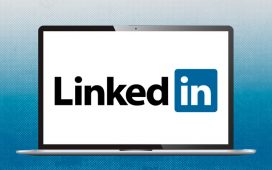Virtual meeting
One of the downsides of virtual meetings is that they make it harder to read people. Before COVID you could get a sense for how people were going to engage with you by looking around their office for things like graphs and charts, clean desks, family photos, and memorabilia. Now you have to use a different set of tells.
A mash-up of the Hermann Whole Brain, DISC, Dennis Stratton’s ILS, and insights from Dr. Bill Berman spotlights different people’s bias to lead with plans, process, people or purpose.
Quadrants
PLANS
Quadrants
Logically thinking planners are organized and hunger for data, examples, and predictable performance driven by specific plans in a predetermined order. As psychologist and master coach Dr. Bill Berman puts it, planners “focus on what will be” with a strategic, big picture perspective.
Their virtual tell is getting straight to the point and asking questions about how things can help improve future results.
Influence them by going through the high-level future-focused logic of your thinking.
PROCESS
Quadrants
Those focused on process act logically, are detail-oriented and interested in making things work more controlled and efficiently in what Berman describes as the “what is” state.
Their virtual tell is pushing to understand the specific details about how things actually work now.
Influence them with the logical, detailed, practical steps of how things work with an eye to eliminating errors.
PEOPLE
Bradt
People people acting intuitively tend to be likeable, loyal and patient, putting individual relationships first.
Their virtual tell is asking about you.
Connect with them personally before trying to influence them. Help them understand the impact of what you have in mind on how people will feel.
PURPOSE
Bradt
Purpose-driven intuitive thinkers are future-oriented, optimistic, charismatic and persuasive, visionary and inspiring, thinking, as Berman put it, in terms of “principles, organizations, institutions.”
Their virtual tell is often the lack of a tell as they wait to see how you’re going to inspire them or offer a general invitation for you to lead the conversation.
Do lead the conversation, helping them understand how what you have in mind can help strengthen their culture on the way to achieving their vision.
Using tells in specific situations:
Job Interviews
There are only three job interview questions ever about strengths, motivation and fit. While fit is about the alignment of your personal preferences and the organization’s culture, that starts with your fit with the person you’re interviewing with.
Take into account Berman’s thinking and explain yourself in the way that most resonates with your interviewer whether it’s data on the results you’ve delivered versus plan for planners, a description of how you made things happen on time in detail for those process-focused, helping people people understand how your change management efforts influenced other people, or describing how you inspired a larger group and evolved the culture for purpose-driven intuitive thinkers.
Sales Calls
In some ways, sales calls are interviews with similar guidelines. Note people have to buy you before they buy whatever it is you’re selling. Focus on examples and references for planners, details of how things work for those process-focused, impact on people’s feelings for people people, or how it helps purpose-driven intuitive thinkers achieve their vision.
Onboarding
As described in my article on the seven stages of executive onboarding, converging and evolving is about establishing relationships first. Relationships are two-way. Ask planners about their plans. Ask those more process-focused to explain how things work – processes. Ask people people about people. Ask purpose-driven intuitive thinkers about their vision.
Team Start Ups
In some ways, team start-ups are like group onboarding. Break the team into pieces and, as much as possible, get to know your new teammates as individuals. Read their virtual tells, ask the questions described in the onboarding paragraph above and explain yourself in the ways described in the Job Interview and Sales Calls sections.
A call for help
It seems that meeting people for the first time virtually is going to be an ongoing part of how we all work together. Thus, we all have to get better at doing this. Need your help in ratcheting up the current best thinking on this laid out in this article. Would greatly appreciate your emailing your ideas to me at gbradt@primegenesis.com.
Click here for a list of my Forbes articles (of which this is #826) and a summary of my book on executive onboarding: The New Leader’s 100-Day Action Plan as well as a summary of Bill Berman and my book, Influence and Impact










